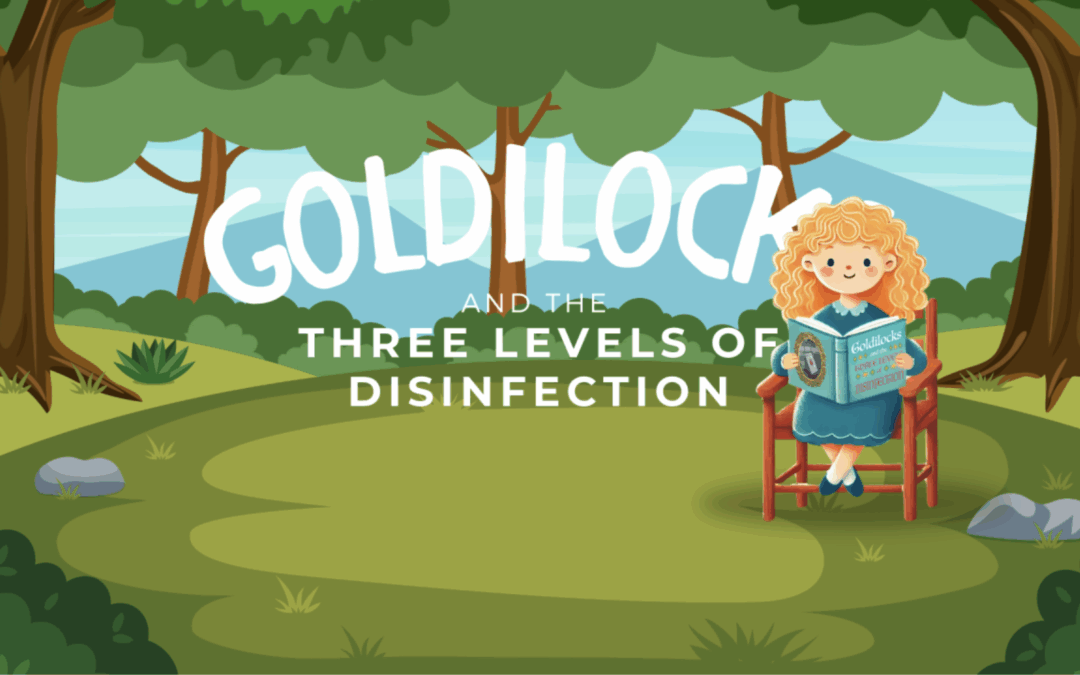Once upon a time, Goldilocks stumbled into the home of three bears, testing out porridge, chairs, and beds until she found the ones that were “just right.” But what does this classic tale have to do with UV disinfection? Like Goldilocks’ search for the perfect balance, UV disinfection also requires a “just right” approach that avoids underexposure and overexposure.
The Goldilocks Approach to UV Disinfection
UV disinfection is a powerful tool for eliminating harmful pathogens, but it must be applied correctly. If a room is underexposed, shadowed areas may not receive enough UV light to be properly disinfected. On the other hand, overexposure can degrade materials, leading to micro-cracks that provide new hiding places for bacteria. The key is finding the perfect balance: an optimal dosage that ensures thorough disinfection without causing damage.
The Problem of Underexposure
Underexposure often occurs when the laws of physics that govern light behaviour our not respected. This can be the case with single-tower devices not positioned throughout the disinfection cycle. Consider a 45-minute disinfection cycle with one UV source in the centre of the room. While areas near the source receive an adequate dose, shadowed areas like under-patient beds or behind fixtures and equipment may receive very little due to the laws of physics governing light travel.
The Inverse Square Law dictates the effect distance has on light intensity, meaning its intensity decreases rapidly as distance increases. UV light does not bend around objects, so surfaces hidden from direct exposure remain contaminated. While reflection can play a role, it is highly inconsistent and should not be relied upon to ensure thorough disinfection. The result? Pathogens in shadowed areas survive, defeating the purpose of disinfection.
The Often-Ignored Danger of Overexposure
While underexposure is well understood, overexposure is rarely discussed. Overexposure occurs when UV light is applied for too long or at too high an intensity, damaging materials within the room. Some studies have shown that prolonged 90-minute disinfection cycles can create significant disparities in UV exposure, ranging from as low as 16 mJ to over 1,000 mJ. This variation is critical because ensuring that all surfaces receive a sufficient dose, such as 254 mJ, would mean that the highest-exposed areas could receive over 15,000 mJ, potentially leading to material degradation, including microcracks and surface damage.
This damage isn’t just cosmetic. It creates tiny openings where bacteria can colonise and remain out of reach from future chemical cleaning and UVC disinfection. Excessive UV exposure can contribute to long-term contamination problems instead of eliminating pathogens. Materials like plastics, rubber, and even some medical equipment surfaces can degrade, making them more difficult to clean effectively in the future.
Validating the Just-Right Approach
Do you know when the dosage is “just right”? Our dosimeters measure UV exposure in real time, providing validation and ensuring the UV disinfection cycle performs as expected.
There is no more guessing or pressing “start” and hoping the room is disinfected. With dosimeters, you now have actual evidence that the technology is working effectively.
“The Goldilocks approach ensures that UV disinfection is neither too little nor too much… but just right.”
Send us a message on LinkedIn if you are interested in learning more, or want to partner on any future projects.
About Intellego Technologies AB
Intellego Technologies is a research and development company, headquartered in Stockholm, Sweden. Founded in 2011, Intellego has grown to become the global leader in colorimetric indicators that are utilized worldwide to visually validate the dose of ultraviolet irradiation delivered to surfaces. Through its patented photochromic technology, Intellego manufactures standard and customized indicators that make the benefits of ultraviolet light visible and promotes the safe, effective and efficient use of UV applications. Intellego’s products support better outcomes with ultraviolet devices in healthcare, food and beverage manufacturing, environmental services, and more.
For more information, visit Intellego-Technologies.com or explore our full Intellego Disinfection range here.

